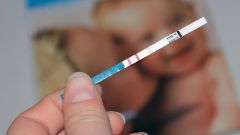You will need
- - to visit the center of family planning;
- - pass the necessary tests.
Instruction
1
Rate, what is your menstrual cycle. Typically, its frequency is 26-34 days, and highlight the last 3-5 days. If the cycle is too short or long, or if its duration varies from month to month, there is a possibility that the ovaries may be incorrect.
2
Measure basal temperature during one cycle. If approximately two weeks before menstruation there is a jump of 0.4 ° C, then ovulation occurs.
3
Contact the family planning centre or to a local gynecologist in the antenatal clinic. At the initial examination the doctor will swab from the vagina that will help to detect the infection, if any. Quite often this is the cause of infertility.
4
Also the doctor will prescribe you a blood test for hormones. Usually investigate the concentration of such hormones as estrogen, progesterone, luteinizing hormone, prolactin, testosterone, thyroid-stimulating hormone. But, based on surveys, the doctor may prescribe additional tests.
5
Sign up for a ultrasound of the uterus and ovaries. It will show whether there are any irregularities in the functioning of these bodies.
6
Check the patency of the fallopian tubes. There are several methods that allow you to know if the fallopian tube. Often, doctors use the method of hysteroscopy. Also you can offer procedures such as hysterosalpingography and laparoscopy.
7
Ask your partner to consult an andrologist and take their semen. After all, the cause of infertility is not always lies in the disruption of the female body.
8
There is also analysis called "postcoital test". It helps to assess if the male sperm to penetrate the cervical mucus of a woman.
Useful advice
If the results of examinations and analyses you find that you or your partner are unable to have children, do not despair. There are many assisted reproductive technologies, giving the chance to have a baby for almost all infertile couples.




